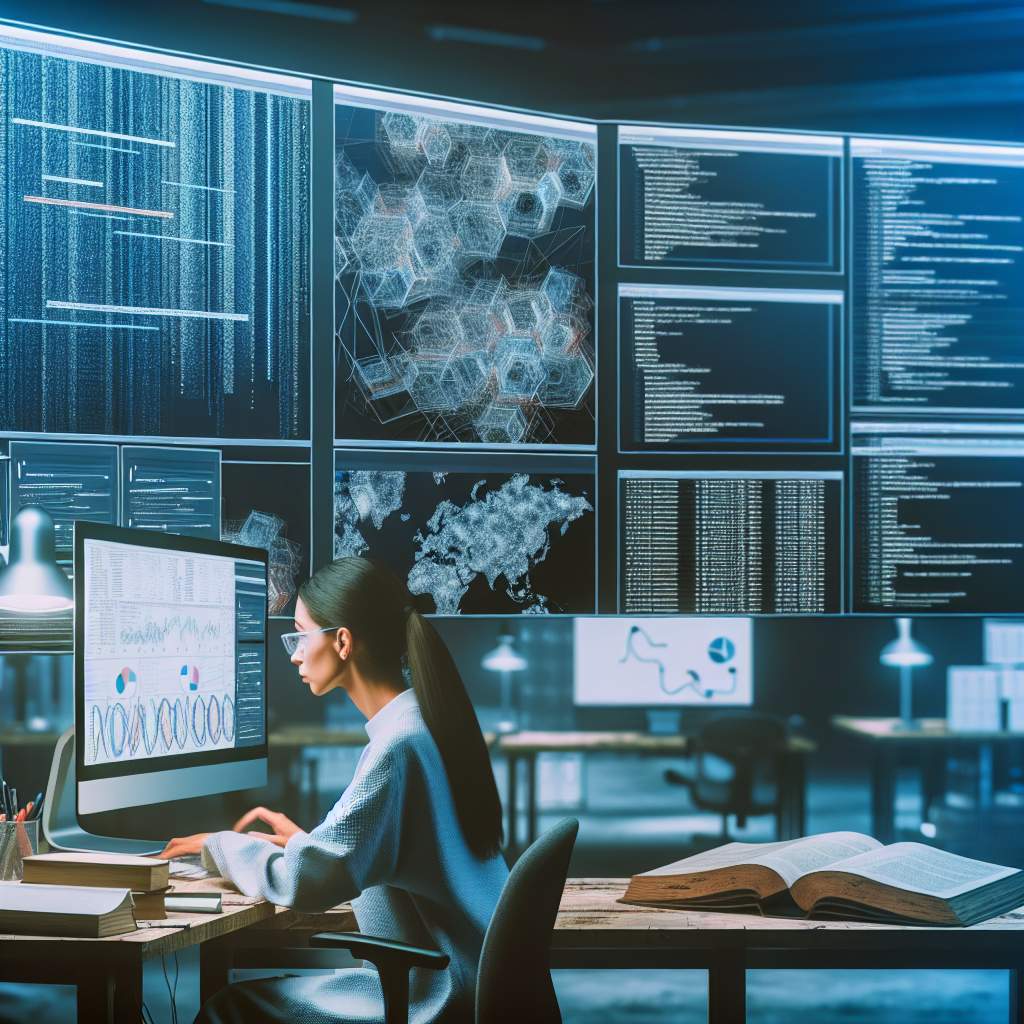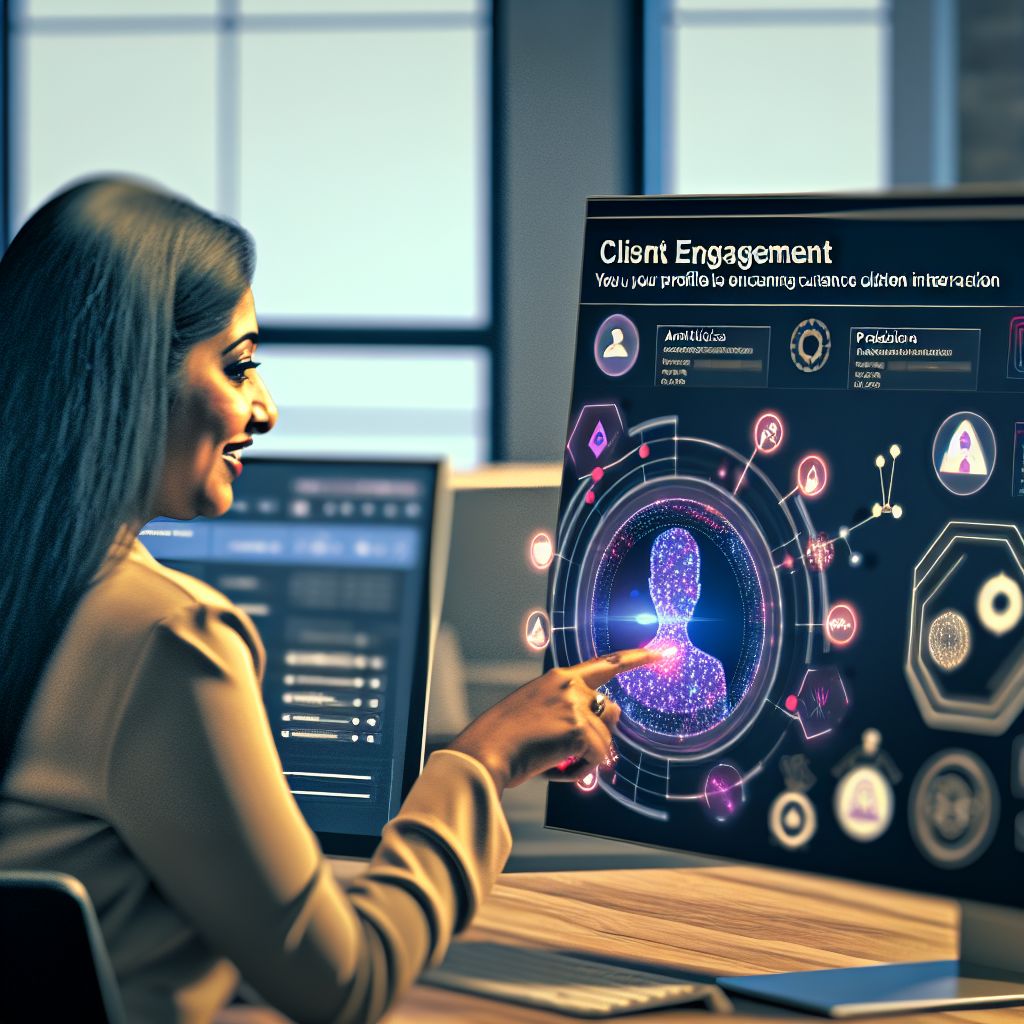Introduction
Overview of the importance of screen recording in modern digital communication
Screen recording has transformed modern digital communication.
Professionals, educators, and content creators rely on this tool to convey messages effectively.
It captures visual content and enhances engagement through dynamic presentations.
Introduction to advanced features
Advanced screen recording features are revolutionizing how we create digital content.
Among these features, the concepts of “rewind” and “re-record” in real-time stand out.
These functionalities allow users to capture footage seamlessly without starting from scratch.
This capability enhances efficiency and promotes a smoother recording experience.
Purpose of the post
The purpose of this post is to explore these advanced screen recording techniques.
We will examine their applications in various fields, including education, business, and entertainment.
Understanding these features can elevate your recording game, making your content more professional and impactful.
Understanding Rewind and Re-Record
The rewind function allows users to revisit previous moments within the recording session.
If a mistake occurs, you can easily rewind and correct it.
This capability eliminates the stress of redoing entire recordings.
It enhances the overall recording quality by reducing errors.
The re-record function complements the rewind feature by enabling users to redo specific segments without starting over.
This is particularly useful in tutorial videos or presentations.
You can refine your content on-the-fly, ensuring clarity and precision.
These features ensure that every detail is captured as intended.
Applications in Various Fields
In education, teachers can create comprehensive lessons using these advanced features.
Students benefit from precise explanations that reduce misunderstandings.
Similarly, in business, presentations can be edited in real-time, improving professionalism and clarity.
Content creators in the entertainment industry also gain from these tools.
They can produce high-quality tutorials, gameplay videos, and product reviews.
The ability to rewind and re-record fosters creativity and enhances viewer engagement.
In summary, advanced screen recording features like rewind and re-record offer significant benefits.
These tools streamline the recording process, making it more efficient and effective across various fields.
Understanding Screen Recording
Screen recording has become an essential tool for various sectors.
It’s vital to grasp its definition and functionalities.
Screen recording tools capture whatever happens on your screen.
They provide a platform for sharing visual content efficiently.
These tools can capture videos, audio, and even mouse movements.
Users can select specific areas or record the entire screen.
Definition and Basic Functionalities of Screen Recording Tools
Screen recording tools allow users to create video recordings of their screens.
This technology facilitates easy documentation of digital interactions.
Basic functionalities include:
We Design & Develop Websites, Android & iOS Apps
Looking to transform your digital presence? We specialize in creating stunning websites and powerful mobile apps for Android and iOS. Let us bring your vision to life with innovative, tailored solutions!
Get Started TodayCapturing video content from your screen in real-time.
Recording audio from your microphone or system sound.
Allowing users to highlight or focus on specific screen areas.
Offering options for annotation and drawing during recording.
These functionalities serve various purposes.
For example, they help create tutorials by demonstrating software usage.
Additionally, they allow gamers to stream their gameplay online.
Businesses benefit when employees present training sessions or virtual demonstrations.
Overview of Common Use Cases
Different sectors benefit from screen recording for specific objectives.
Some common use cases include:
- Tutorials: Instructors use screen recording to show step-by-step processes.
- Gaming: Players capture and share gameplay moments with audiences.
- Presentations: Professionals record their slides and voiceovers for remote viewers.
- Technical Support: Support staff demonstrate how to solve user problems effectively.
- Content Creation: Creators make videos for blogs and social media platforms.
These use cases illustrate the versatility of screen recording tools.
They enhance the ability to communicate visually and engagingly.
As the digital landscape evolves, advanced features emerge to improve the overall user experience.
Transition to Advanced Features
While basic screen recording functionalities are invaluable, advanced features significantly enhance productivity.
Understanding these features can improve your recording sessions.
Consider the following enhancements often found in modern screen recording tools:
- Rewind and Re-record: Allows users to go back and fix mistakes during recording.
- Live Streaming: Users can broadcast directly from their screens to audiences.
- Multi-screen Recording: Capture content from multiple sources simultaneously.
- Editing Tools: Built-in editors enable users to trim, cut, and annotate recordings post-capture.
- Cloud Storage: Save recordings directly to the cloud for easy access and sharing.
These advanced features help streamline the recording process.
They make it easier to produce high-quality video content while minimizing distractions.
Moreover, these features allow users to focus on their tasks without worrying about constant retakes.
Benefits of Advanced Features
Incorporating advanced features into screen recording tools offers many benefits.
Users experience improved overall quality and ease of use. The key advantages include:
- Efficiency: Quickly redo specific sections without starting over.
- Content Quality: Polish recordings with editing features and additional tools.
- Flexibility: Adapt recordings to meet diverse audience needs.
- Time-Saving: Spend less time on multiple takes due to the ability to rewind.
These benefits highlight the importance of advanced functionality.
They empower users to create engaging content quickly and effectively.
As the demand for high-quality screen recordings grows, mastering these features becomes essential.
Understanding screen recording tools is crucial in today’s digital world.
Whether for education, gaming, or business, these tools offer valuable functionality.
With the addition of advanced features, the potential for creativity expands significantly.
Using tools that allow users to rewind and re-record can change the way you create and share content.
Embrace the power of these functionalities for enhanced productivity.
Consider your recording requirements.
Assess how advanced features can aid in achieving your goals.
Select tools that provide the best options for your specific use case.
By doing so, you will enhance your digital communication exponentially.
In essence, mastering screen recording, specifically advanced capabilities, empowers users.
It delivers enhanced user experience and creativity while increasing productivity and minimizing frustration.
We Design & Develop Websites, Android & iOS Apps
Looking to transform your digital presence? We specialize in creating stunning websites and powerful mobile apps for Android and iOS. Let us bring your vision to life with innovative, tailored solutions!
Get Started TodayDive into the world of screen recording and transform how you communicate visually.
Read: Automated Onboarding: Revolutionize Facebook Group Management
The Need for Advanced Screen Recording Features
In today’s digital age, screen recording serves various purposes.
Content creators, educators, and business professionals rely on this tool.
They often face challenges with basic screen recording tools.
These challenges can hinder the overall quality of their work.
This section explores these issues and presents the need for advanced screen recording features.
Challenges Faced by Users with Basic Screen Recording Tools
Basic screen recording tools often provide limited functionality.
Users encounter several challenges when relying on these tools:
- Editing Limitations: Basic software often lacks robust editing features. Users cannot modify their videos easily. This results in lengthy post-production processes.
- Re-recording Issues: Users find it cumbersome to redo recordings. Basic tools usually don’t allow users to rewind and redo specific sections. This can lead to frustration and wasted time.
- Poor Quality Output: Many basic tools offer low-resolution recordings. Users end up with grainy visuals that detract from their content.
High-quality production is essential for effective communication. - Audio Sync Problems: Audio and video synchronization can be problematic. Users may notice desynchronization issues that disrupt the viewing experience. This can lead to confusion for viewers.
- Inadequate Annotation Tools: Users often need to annotate their recordings. Basic tools usually lack sufficient options for annotations.
This limits the ability to emphasize key points during presentations.
The Importance of Capturing High-Quality Content
High-quality content creation is essential in many fields.
Whether for educational purposes or business presentations, clarity matters.
Advanced screen recording features facilitate this need effectively.
The significance of capturing high-quality content cannot be overstated:
- Engagement: High-quality recordings engage viewers more effectively. When visuals are clear and professional, viewers pay more attention.
- Retention: Viewers retain information better from well-produced content. High-quality visuals and audio enhance learning experiences.
- Professionalism: Quality recordings present a professional image. This is crucial for businesses looking to establish credibility.
- Sharing and Distribution: Capturing high-quality content eases sharing. Users can disseminate their recordings across platforms without loss of quality.
- Ease of Use: Advanced features simplify the recording process. Users can focus on their content rather than wrestling with tools.
Case Studies Illustrating the Necessity for Advanced Features
Real-world scenarios highlight the necessity of advanced screen recording features.
Here are a few case studies that demonstrate this need:
- Educator Scenario: An educator used a basic screen recording tool for online classes. Frustrated by poor audio quality and annotation limitations, she struggled to engage her students.
Eventually, she switched to an advanced tool. The enhanced features allowed her to integrate interactive elements seamlessly.
This improved student participation significantly. - Corporate Training: A company aimed to create training modules for new hires. They initially used basic recordings, resulting in low retention rates.
After transitioning to a screen recording tool with advanced features, they integrated quizzes and real-time feedback.
This interactive approach fostered a dynamic learning environment. Employee performance metrics improved considerably. - Gaming Content Creator: A gaming YouTuber faced challenges with basic software. Constant interruptions from audio sync issues led to frustration.
After upgrading to a more sophisticated tool, he could control his recordings in real-time.
This allowed him to create engaging content without worrying about edits. Subsequently, his subscriber count grew exponentially.
These case studies highlight the impact of advanced features.
They showcase how upgrading tools can transform content quality and engagement levels.
In summary, basic screen recording tools present numerous challenges to users.
Limited editing options, poor audio-visual quality, and cumbersome re-recording processes hinder productivity.
The need for advanced screen recording features becomes apparent when considering these issues.
High-quality content is essential for effective communication, whether in education or business.
Case studies reveal that users benefit significantly from advanced features.
Enhanced tools facilitate interactive and engaging content creation.
By embracing these tools, users can elevate their work to new heights.
Therefore, investing in advanced screen recording features is crucial for anyone serious about content creation.
Read: Essential Cloud Solutions for Scalable Business Growth
What is Real-Time Rewind?
Screen recording software has evolved significantly, offering users advanced capabilities that greatly enhance their recording experience.
One of the most revolutionary features is real-time rewind.
Real-time rewind allows users to reverse the recording and capture critical moments effortlessly.
This technology ensures you never miss an important detail.
Below, we’ll explore what real-time rewind is, how it works, and the numerous benefits it provides.
Real-time rewind is a feature integrated into various screen recording programs.
This feature enables users to revisit previously recorded footage during the recording session.
Essentially, it allows you to “rewind” the action rather than stopping the recording and starting over.
With real-time rewind, users can quickly relocate to vital points in the ongoing screen activity.
We Design & Develop Websites, Android & iOS Apps
Looking to transform your digital presence? We specialize in creating stunning websites and powerful mobile apps for Android and iOS. Let us bring your vision to life with innovative, tailored solutions!
Get Started TodayAs you record, the software continuously captures and stores footage in a buffer.
The buffer holds a portion of the video feed, allowing users to instantly access moments that need re-recording or adjustment.
How It Works
The underlying technology of real-time rewind revolves around buffering and playback mechanisms.
Here’s how it functions:
- Buffering Process: The software constantly records the screen activity and stores a copy in a temporary buffer.
This buffer acts like a digital holding area, capturing everything happening on the screen. - Real-Time Playback: When users hit the rewind button, the software retrieves footage from the buffer instead of starting a new recording session.
This process allows seamless access to the previously recorded content. - Instant Access: Users can navigate backward in time, allowing them to review, edit, or re-record specific segments instantly.
This sophisticated buffering technology ensures that users maintain a smooth workflow without interruption.
You can focus on presenting a perfect recording without the anxiety of missing key points.
Advantages of Using Real-Time Rewind
Real-time rewind offers numerous benefits that improve both productivity and content accuracy.
Here are some key advantages:
- Improved Workflow: With real-time rewind, users can streamline their recording sessions. You no longer need to stop and start recordings.
Instead, you can capture all necessary content in one go, leading to a more efficient process. - Enhanced Content Quality: The feature ensures your content is polished and professional.
You can easily review what you’ve recorded, edit out mistakes, or enhance portions that may require re-recording. - Reduced Stress: Knowing you can rewind and redo sections reduces pressure. You can present naturally and comfortably, knowing you have an easy way to correct errors.
- Immediate Feedback: Real-time rewind allows for immediate feedback during presentations or tutorials.
You can quickly assess how each segment looks and make necessary adjustments on the fly. - Better Learning Experience: For educators and trainers, this feature enhances the learning experience. You can demonstrate concepts, rewind, and clarify any misunderstanding immediately.
- Time-Saving Capabilities: The need for re-recording entire sessions diminishes. This time-efficiency can lead to quicker project turnarounds and increased productivity.
Incorporating real-time rewind in screen recording software marks a significant advancement.
This feature changes how users engage with their recordings and reshapes the workflow in numerous industries.
As users, knowing how to fully utilize real-time rewind can enhance your productivity and improve the quality of your recorded content.
You can take full advantage of this tool by practicing using it during varied recording scenarios.
By integrating real-time rewind into your workflow, you can produce high-quality recordings and improve your overall efficiency.
Generally, real-time rewind is not just a luxurious enhancement; it is becoming a necessity for effective communication and content creation.
As technology continues to advance, the capacity for innovative features like real-time rewind will only grow, making screen recording more user-friendly and efficient.
Read: Best Practices for Custom Enterprise Software Development

Exploring Real-Time Re-Recording
In the digital age, screen recording technology has evolved significantly.
Among its innovations is the ability to re-record content in real-time during a screen recording session.
This feature offers immense flexibility for creators, educators, and professionals alike.
It enhances the overall quality of recorded content and allows for seamless corrections or additions without starting over.
Definition and Mechanics of Re-Recording Content On-the-Fly
Re-recording content on-the-fly refers to the ability to replace sections of video as they are recorded.
This enables users to capture their thoughts without compromising the flow of their presentation.
Here’s how it works:
- Integration with Screen Capture Software: Modern screen recording software incorporates re-recording features. Users can pause and review their recording at any time.
- Single Click Functionality: A simple click allows users to re-record a segment. This eliminates complex workflows and keeps the recording process fluid.
- Immediate Playback: Users can instantly replay sections before re-recording. This allows for targeted adjustments and a professional outcome.
- Audio and Video Synchronization: Advanced software keeps audio and video in sync. This means users can focus on content quality rather than technical glitches.
The process of re-recording in real-time transforms screen recording into an interactive endeavor.
Users engage dynamically with their content, leading to enhanced engagement and retention for viewers.
Scenarios Where Re-Recording is Beneficial
Real-time re-recording is particularly effective in several scenarios.
Here are key situations where this feature proves invaluable:
- Correcting Mistakes: Mistakes happen, whether in speech or demonstrations. Re-recording eliminates the need to start over, preserving time and effort.
- Adding New Information: As the recording progresses, new insights may emerge. Re-recording accommodates these additions, enriching the content’s depth.
- Clarifying Complex Concepts: When explaining intricate topics, clarity matters. Users can re-record segments to ensure their explanations are clear and concise.
- Responding to Audience Questions: In live educational settings, audience interaction is common. Re-recording allows presenters to address questions on the spot, improving the learning experience.
- Refining Demonstrations: Many tutorials involve step-by-step instructions. Re-recording enables users to demonstrate each step accurately, promoting better understanding.
Incorporating re-recording capabilities allows creators to enhance their content without additional stress.
They can focus on delivering value rather than stressing over a perfect first take.
User Interface Considerations
A user-friendly interface plays a pivotal role in facilitating effective re-recording.
Software developers design intuitive interfaces that enhance the recording experience.
Here are some essential user interface considerations:
- Accessible Controls: Users need quick access to re-recording features. Controls should be easily reachable during recording sessions, minimizing disruptions.
- Clear Visual Indicators: Visual cues inform users when they are in re-recording mode. This clarity prevents confusion and ensures seamless transitions.
- Customizable Shortcuts: Allowing users to set their keyboard shortcuts can optimize workflow. Personalization makes re-recording more efficient and user-friendly.
- Preview and Review Options: Providing an immediate preview of re-recorded segments helps assess quality before finalizing. This feature enhances the overall editing experience.
- Integrating Annotation Tools: Users can highlight important points during the session. Annotations can provide context before re-recording, making adjustments easier.
In an increasingly visual world, intuitive interface design plays a crucial role in user experience.
Optimal interfaces lead to higher-quality recordings and less frustration for users.
Real-time re-recording revolutionizes the way content creators approach screen recording.
We Design & Develop Websites, Android & iOS Apps
Looking to transform your digital presence? We specialize in creating stunning websites and powerful mobile apps for Android and iOS. Let us bring your vision to life with innovative, tailored solutions!
Get Started TodayWith the power to correct mistakes and add information on the fly, the recording experience becomes more seamless and efficient.
By utilizing well-designed user interfaces, users can navigate the re-recording process easily and intuitively.
As technology continues to advance, re-recording will undoubtedly evolve further.
Users can expect more intuitive features, improved integrations, and enhanced tools.
The ongoing development of these capabilities will empower content creators to deliver high-quality presentations that engage and inform their audience.
In summary, the ability to re-record content in real-time presents significant advantages.
It fosters a smoother workflow and allows users to produce polished content without starting from scratch.
This flexibility stands as a testament to the ever-evolving landscape of digital content creation.
Read: How AI Enhances Decision-Making in Enterprise Solutions
Best Practices for Utilizing Rewind and Re-Record Features
When it comes to utilizing advanced screen recording features, knowing best practices can significantly elevate your content delivery.
Rewind and re-record capabilities can optimize workflow, ensuring you capture the perfect take without losing momentum.
Here, we’ll explore tips for effectively using these advanced features, recommend powerful software options, and outline strategies for minimizing disruptions during your recording sessions.
Tips for Effectively Using Advanced Screen Recording Features
Implementing best practices can help you maximize the benefits of rewind and re-record functionalities.
The following tips will guide you through the process:
- Plan Your Content: Before recording, outline your objectives. Knowing your material thoroughly streamlines the recording process.
- Test Your Setup: Ensure your microphone, camera, and screen capture settings are working correctly. A quick test can prevent technical issues later.
- Use a Script: A well-prepared script can help maintain focus and fluency during recording. It reduces the need for excessive re-recording.
- Record in Segments: Break your content into manageable sections. This approach allows for easy rewinds and re-records without losing your train of thought.
- Minimize Background Noise: Record in a quiet environment. Use soundproofing materials or background noise reduction features in your recording software.
- Engage with the Audience: Maintain eye contact with the camera and use gestures. This enhances viewer engagement, making your content more compelling.
- Leverage Hotkeys: Familiarize yourself with keyboard shortcuts for your software. Easily rewind or re-record specific sections seamlessly.
Recommendations on Software
Choosing the right screen recording software is vital for effortless content creation.
Here are some software options that feature rewind and re-record capabilities:
- Camtasia: This tool offers an intuitive interface with robust editing capabilities. You can easily rewind to specific moments or re-record sections without hassle.
- OBS Studio: Open Broadcaster Software (OBS) provides advanced control options. Though initially more complex, it allows for high-quality recordings and custom setups.
- Snagit: Best known for screen captures, Snagit also supports recording functionalities. The rewind feature is simple and effective, streamlining post-production tasks.
- Screencast-O-Matic: This software is user-friendly and allows users to edit videos during the recording process. It offers real-time re-record options that are beneficial for quick edits.
- Bandicam: A popular choice for gamers, Bandicam provides high-quality recording and real-time editing. The intuitive interface supports easy rewinding and re-recording.
Select a tool that fits your needs and offers an easy-to-navigate interface.
Consider factors such as price, customization options, and the intended use of your recordings.
Testing a few options before settling can provide insight into which software aligns best with your objectives.
Strategies to Minimize Disruption During Recording Sessions
Recording sessions can present distractions that disrupt flow and efficiency.
Implementing effective strategies can significantly minimize interruptions:
- Set a Schedule: Designate specific times for recording. Stick to this schedule to encourage focus and reduce disruptions.
- Inform Others: Notify family members or coworkers when you’re recording. Request minimal interruptions during your sessions for optimal focus.
- Create a Comfortable Environment: Arrange your recording space to be comfortable and distraction-free. Keep necessary materials within reach to avoid frequent breaks.
- Use Do Not Disturb Features: Activate your device’s Do Not Disturb setting. This action helps prevent notifications from interrupting your recordings.
- Stay Organized: Prepare all necessary visual aids and scripts beforehand. Keeping everything organized leads to smoother recordings.
- Take Breaks as Needed: If you feel fatigued, take short breaks. Following this approach enhances focus during the actual recording session.
- Review and Edit Wisely: After recording, use the software’s editing features to clean up your recording. Focus on sections needing re-recording and skip over perfect parts.
Utilizing advanced rewind and re-record screen recording features like rewind and re-record can optimize your video content creation.
By following the tips outlined above, you can enhance your content delivery remarkably.
Selecting the right software is crucial, and testing different options lends valuable insights into their functionalities.
Additionally, adopting strategies to minimize disruptions ensures a focused recording environment.
Embrace these practices to create engaging, polished content effortlessly.
Remember, the key to mastering screen recording lies in preparation and adaptability.
With practice, these advanced features will become an integral part of your content creation toolkit.
Potential Limitations and Challenges
Utilizing advanced rewind and re-record screen recording tools can significantly enhance user experiences.
However, certain limitations and challenges accompany these advanced features.
Here, we will explore the potential difficulties associated with advanced screen recording tools and provide insights to overcome them.
Possible challenges associated with advanced features
Software Compatibility Issues
One major challenge involves software compatibility.
Users may face difficulties when their systems do not meet specific requirements.
The following points outline these issues:
We Design & Develop Websites, Android & iOS Apps
Looking to transform your digital presence? We specialize in creating stunning websites and powerful mobile apps for Android and iOS. Let us bring your vision to life with innovative, tailored solutions!
Get Started Today- Operating System Compatibility: Not all screen recording applications support every operating system. Users should verify compatibility with their OS.
- Hardware Requirements: Intensive screen recording may necessitate upgraded hardware. Users should ensure their computers can handle high-performance tasks.
- Third-Party Software Dependencies: Some features rely on other software. Users must install or update these third-party applications.
- Browser Compatibility: Web-based recording tools may not work well across different browsers. Users should consider using recommended browsers for optimal performance.
Computer Performance Requirements
Computer performance greatly influences the efficiency of rewind and re-record screen recording.
High-definition recording often demands more resources.
The following aspects contribute to these performance challenges:
- CPU Usage: Intensive recordings can strain CPU resources. Users should monitor CPU usage during sessions.
- Memory Utilization: Lack of available RAM can hinder recording quality. Users should close unnecessary applications beforehand.
- Storage Space: High-quality recordings consume significant storage. Users must ensure ample disk space.
- Graphics Processing: Advanced graphics may require dedicated GPUs. Users should consider upgrading their graphics cards if necessary.
User Learning Curve
Another notable challenge is the learning curve associated with advanced rewind and re-record screen recording tools.
While these features can be powerful, they may overwhelm new users. Consider the following:
- Complex Interface: Many advanced tools feature complex interfaces. Users might initially struggle to navigate them.
- Advanced Features: Understanding features like rewind and re-record requires time. Users should dedicate time to familiarize themselves with all functionalities.
- Varying Skill Levels: Users possess different levels of tech-savviness. Training may be beneficial to less experienced individuals.
- Documentation: Limited documentation can hinder user understanding. Comprehensive guides and tutorials can facilitate the learning process.
Importance of Training
Training plays a crucial role in maximizing the benefits of advanced rewind and re-record screen recording tools.
Proper training fosters confidence and competence. Important aspects of training include:
- Hands-On Training Sessions: Live demonstrations allow users to observe and practice features effectively.
- Tutorial Videos: Offering video tutorials can provide visual aids that clarify complex concepts.
- Online Courses: Many platforms offer courses tailored to specific applications. Users may benefit from structured learning paths.
- User Communities: Engaging with user forums can provide insights and tips from experienced users.
Troubleshooting Common Problems
Even with training, users may encounter common issues while using advanced rewind and re-record screen recording tools.
Understanding how to troubleshoot these problems is essential.
Here are some frequent challenges and their solutions:
- Recording Failure: If the screen recording fails, check software permissions. Ensure all necessary permissions are granted.
- Audio Issues: Sound problems may arise while recording. Verify that the correct audio source is selected in the settings.
- Low Quality Recording: If recordings appear lower than expected, adjust the video quality settings. Opt for higher settings for better quality.
- Crashing Software: Frequent crashes might indicate resource limitations. Close other applications to free up resources.
- Playback Issues: If playback is laggy, consider reducing the resolution during recording. Lower resolutions require fewer resources.
Advanced rewind and re-record screen recording tools offer outstanding capabilities that enhance user experiences.
However, they also present potential limitations and challenges that users must navigate.
By understanding software compatibility, computer performance requirements, and the importance of training, users can optimize their recording efforts.
Additionally, familiarizing oneself with troubleshooting strategies ensures a smoother experience.
Embracing these technologies ultimately empowers users to create incredible content while minimizing frustration.
Future of Screen Recording Technology
Trends in Screen Recording Technology
The landscape of screen recording technology is evolving rapidly.
Innovations emerge regularly, altering how we capture and share visual content.
Users expect more from their screen recording software every year.
This section delves into current trends and anticipated advancements.
- Increased Integration with AI: Artificial Intelligence is revolutionizing screen recording. AI will automate editing processes, making recordings cleaner and more professional.
- Enhanced Real-Time Collaboration: Users increasingly seek ways to collaborate during live recordings. Technologies enabling real-time annotations and feedback will demand attention.
- Mobile Functionality: As mobile devices become more prevalent, platforms will focus on enhancing mobile screen recording capabilities. Expect improved user interfaces tailored for touch screens.
- Cloud-Based Solutions: Cloud technology continues to rise, allowing easy storage and sharing of recordings. Users can access files from anywhere, promoting flexibility.
- Streaming Capabilities: With the growth of live streaming, recordings will feature direct streaming options. This offers immediate audience engagement.
Impact of Ongoing Innovations on Rewind and Re-Record Features
As technology progresses, features like rewind and re-record screen recording will significantly enhance user experience.
Here are possible impacts:
- Instant Feedback Mechanisms: Innovations will enable real-time feedback loops. Users may rewind to specific points for instant evaluation during recording.
- Adaptive Learning Modules: Enhanced rewind capabilities may include adaptive learning. Users can rewind to learn from previously recorded feedback.
- Improved User Interfaces: Cleaner interfaces will make rewind and re-record options more intuitive. This accessibility encourages broader usage.
- Contextual Editing: Advanced editing tools may allow users to re-record only specific segments. This saves time and reduces overall editing effort.
- Synchronization with Other Media: Users may combine screen recordings with external media. This integration necessitates advanced rewind functionalities to synchronize edits seamlessly.
Predictions for User Expectations and Demands
As users grow more tech-savvy, their expectations will rise. Here are anticipated user demands for the future:
- Customization: Users will demand highly customizable screen recording settings. Their ability to tailor features will enhance usability.
- Quality Control: High-definition recording quality will become standard. Users will expect crystal clear visuals and audio.
- Advanced Editing Options: Expect users to anticipate robust editing tools directly within recording software. The ability to edit while recording will become increasingly popular.
- Seamless Integration: Users expect screen recording tools to integrate with existing software. Compatibility enhances productivity and supports a streamlined workflow.
- Greater Accessibility: An increasing number of people seek accessible features for screen recording. These individuals prioritize easy navigation and understanding.
To thrive in the face of technological advancements, organizations must adapt. Here are strategies to stay ahead:
- Invest in Research and Development: Continuous innovation ensures companies meet evolving user demands. Invest in R&D to explore new features and functionalities.
- Listen to User Feedback: Regularly soliciting user feedback will help identify improvement areas. Engaging directly with users fosters community and innovation.
- Train Employees: Ensure team members stay updated on technological trends. Regular training sessions cultivate a knowledgeable workforce ready to implement changes.
- Prioritize User Experience: Focus on creating intuitive interfaces that enhance usability. A seamless user experience attracts and retains users
- Collaborate with Other Innovators: Pursue partnerships with tech innovators. Collaboration can lead to groundbreaking features and capabilities.
By embracing these strategies, organizations can remain at the forefront of screen recording technology.
Understanding and adapting to trends will empower both creators and brands in their endeavors.
Ultimately, the future is bright for screen recording technology as we continue to witness exciting advancements.
Conclusion
Recap of the significance of real-time rewind and re-record features in enhancing screen recording effectiveness
In summary, the rewind and re-record screen recording features significantly enhance screen recording effectiveness.
These advanced functionalities allow users to capture the best moments of their presentations seamlessly.
As a result, mistakes become less daunting to correct.
Users can focus on delivering valuable content without the pressure of perfect execution.
Moreover, these features promote greater creativity in crafting instructional videos, tutorials, or game captures.
Users can experiment with various techniques, ensuring they produce polished and engaging content.
This process encourages more dynamic interactions with their audience, resulting in a better viewing experience.
Encouragement to experiment with these advanced functionalities to improve their own screen recording experiences
We encourage you to explore these features in your screen recording activities.
Experimenting with rewind and re-record screen recording can help you achieve a higher level of quality in your videos.
We Design & Develop Websites, Android & iOS Apps
Looking to transform your digital presence? We specialize in creating stunning websites and powerful mobile apps for Android and iOS. Let us bring your vision to life with innovative, tailored solutions!
Get Started TodayDon’t hesitate to try new strategies and adjust your approach as needed.
Your unique flair can make your recordings stand out.
Call to action
We also invite you to share your experiences and tips regarding advanced screen recording techniques.
Your insights can benefit others looking to improve their skills.
By collaborating and exchanging ideas, we can collectively enhance our screen recording practices.
Let’s create a community focused on innovation and sharing knowledge.
Comment below to discuss your successful techniques or any challenges you face.
Remember, every bit of feedback contributes to our understanding and growth in screen recording.
Before You Go…
Hey, thank you for reading this blog post to the end. I hope it was helpful. Let me tell you a little bit about Nicholas Idoko Technologies.
We help businesses and companies build an online presence by developing web, mobile, desktop, and blockchain applications.
We also help aspiring software developers and programmers learn the skills they need to have a successful career.
Take your first step to becoming a programming expert by joining our Learn To Code academy today!
Be sure to contact us if you need more information or have any questions! We are readily available.
Put Your Tech Company on the Map!
Get featured on Nicholas Idoko’s Blog for just $200. Showcase your business, boost credibility, and reach a growing audience eager for tech solutions.
Publish Now









